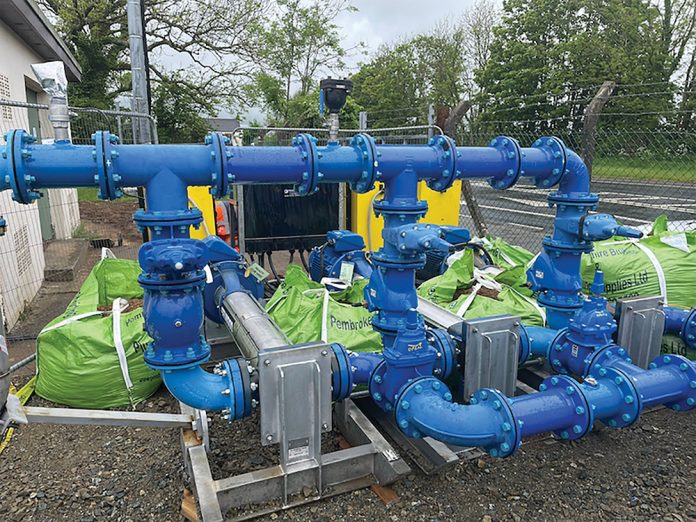When Covid-19 restrictions were lifted and people started to take holidays in the UK, Wales had an influx of tourists which highlighted a shortfall in the amount of potable water available.
A plan was drawn up to upgrade strategic Water Pumping Stations operated by DwrCymru (Welsh Water) to increase the flow to its underground reservoirs and keep water flowing throughout the summer holiday.
To keep water flowing while works were being carried out at Cornerpiece pumping station, Selwood’s solutions teams were asked to support with a temporary overpump setup which could be automatically put into action when needed.
The challenge
The customer was able to access a piece of the farmland just behind the original pumping station which would house site cabins and a set of generators to run the temporary pump setup.
The size of the property presented challenges when it came to deciding where to place the equipment for the overpumping operation.
The setup needed to be completely automatic that it would run at a pre-set pressure and flow with the flick of a switch.
The other challenge was the flow and head of the system to meet the required flows, Selwood’s teams were asked to produce 63 litres per second at 110m head, with an inlet pressure of between 3 – 4 bar.
The solution
One pump on its own wouldn’t produce the flow that was needed so two pumps would need to run at the same time.
Selwood’s solution was to use three 55kw Lowara WRAS approved pumps in a Duty 1, Duty 2 and standby configuration. The pumps were coupled with 6”clean water flanged pipework bolted together to make a manifold with a single suction and single discharge connection.
The pumps and pipework were all built up in the depot ready so once the pumps landed on site they only needed to bolt together four flanges. The pumps were controlled via 55kw variable speed drives (VSD) linked to an IFM inlet pressure sensor with programable set points which could be set to shut the pumps down under low suction pressure and prevent the pumps running dry.
There was also a 4 to 20m pressure sensor fitted to the discharge pipework which could control the discharge pressure and speed the pumps up or slow them down to maintain outlet pressure when the VSD panels were set to PID (proportional integral derivative) loop.
Multiple parts of the VSD program were changed to suit the application:
- Ramp up and ramp down times were extended to help against surge pressure.
- A start delay timer ensured the generator would have time to warm up.
The result
The result was the customer could run their own pumps while the upgrade works were going on – but if a problem such as a pump failure occurred, they could just flick a switch and the temporary over pumping solution would take over without any other human input. The system was designed to mimic the existing pumping station with the minimum of downtime.
The recommendation
Jason Sanders, SEMD Delivery Manager, DwrCymru, said: “From the initial enquiry right through to the commissioning, Selwood gave great advice and support throughout the entire process. The project started with a site visit to the existing pumping station to ensure all needs were discussed with both the current flows and the proposed flows. Selwood provided a pump selection to suit DCWW design requirements for the Cornerpiece WPS system. It was a smooth transaction from start to finish with the temporary pumps now available to ensure the increased flows to the storage reservoir.”
www.selwood.co.uk




